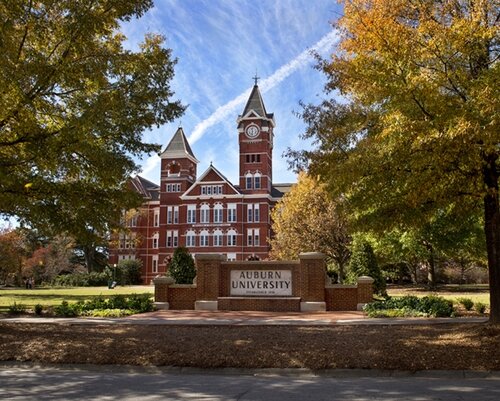Auburn University-led plasma study aboard the International Space Station remotely supervised from Auburn campus
In a broader collaboration of three US institutions, Auburn University (Uwe Konopka, Evdokiya Kostadinova, Edward Thomas, Jr), Wittenberg University (Jeremiah Williams) and Baylor University (Truell Hyde, Lorin Matthews), our groups study the fundamental mechanisms that govern the behavior of classical multi particle systems on a “quasi atomic” level that are responsible for self organization as well as complex dynamics.
Complex plasmas are physical systems of many, typically micrometer-sized particles that are embedded in a low density, partially ionized gas (a plasma). Typically, only one in ten millions of atoms is stripped of an electron. The majority of atoms remain neutral. Due to the collection of free electrons and ions, each microparticle in the system gets charged. As a result, the microparticles interact mainly via electromagnetic forces; however, they are partly shielded by the background plasma. Small fluctuation in the electric fields or streams of charged particles such as a driven ion flow can cause the dust components to gain kinetic energy. The particles, moving wildly due to the heating, are only cooled down in their motion by their interaction with the quite, neutral gas background. Complex plasmas ultimately reach a balance from heating and cooling showing a dynamic state that can be described by its “kinetic” temperature.
Complex plasmas, consisting of millions of microparticles can show self-organization and complex dynamics as can be seen in the image. If the neutral gas cooling is dominant, crystalline structures of different kind are formed. If the kinetic temperature is high, the systems show typical fluid behavior. Of special interest is the transitional regime, the physics of phase transitions, and the moment when a multi particle system – here a complex plasma – transitions from a liquid to a crystal and vice versa.
Overall, complex plasmas are ideal systems to study the dynamics and structure of classical, non quantum-dynamic driven, multi-particle systems. This is attributed specifically to the quasi transparency of the complex plasma. Further advantages are that the motion and positions of the particles can be recorded by standard camera systems and the systems can easily be manipulated down to the motion of individual particles. Lasers, expanded to a sheet of light, are used to select and image a cross-section of a cloud and selectively study a fraction of the interior of the cloud. Self-structuring and microparticle dynamics become accessible on the level of the individual particle position and velocity far from any boundaries.
Why do we perform experiments on the ISS? Beside all the great advantages of complex plasma to study the physics of multi-particle systems, they have also one major disadvantage. As the particles have a non-negligible mass, clouds of particles can easily collapse under gravitational influence. This effects is known as sedimentation. To study large systems of microparticles the gravitational induced sedimentation has to be avoided by utilizing experiment conditions in a free-fall environment. These conditions are referred to as microgravity environments. Complex plasmas have been studied since their discovery on a regular basis with parabolic flights and rocket experiments. Even more sophisticated have been the experiments utilizing facilities aboard the International Space Station. The latter support exceptional flexibility and microgravity conditions that allow to perform detailed studies of complex plasma in all their aspects.
Some members of our team have been involved in the design, development and operation of many of the microgravity based complex plasma experiments. We used either parabolic flights or ultimately configured experiments for the operation aboard the ISS. “Plasma Kristall-4” (PK-4) is just the most recently utilized experiment facility, now in operation aboard the ISS. It is used about twice a year by multiple, international research teams such as ours. A next generation experiment facility, COMPACT, is already under development. It is expected that COMPACT will allow to study more details of the dynamics and self-organization of complex plasma in a more controlled way and also with substantially larger systems.

